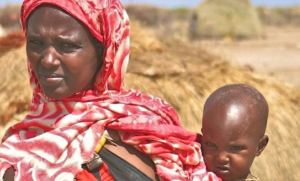 While debates over abortion laws and international norms continue, a stealthy campaign is underway to gain universal acceptance for the tools and training to do abortions, whether legal or not.
While debates over abortion laws and international norms continue, a stealthy campaign is underway to gain universal acceptance for the tools and training to do abortions, whether legal or not.
One recent example comes from the Kigoma Region of Tanzania. Pro-abortion feminists boast that they have established a clinic dispensing the abortion-inducing drug misoprostol in this rural area, despite what one anonymous staff member called “the restricting legal context.” Inspiration for the clinic came from a seminar by the abortion group Women on Web.
The strategy to make misoprostol widely available in Tanzania is guided by abortion-promoting groups in the United States, funded by Western donors, and publicly promoted by Tanzanian organizations that provide the initiative with a local face and evade legal scrutiny by focusing on misoprostol as a treatment for postpartum hemorrhage.
The Tanzanian clinic “is not a health organization—it focuses on advocacy and women’s rights,” said Francine Coeytaux, a noted expert and advocate on medical abortifacients and director of the Misoprostol Initiative of the Public Health Institute.
When it comes to misoprostol, advocacy informs health policy, not the other way around. The World Health Organization (WHO) became the target of aggressive lobbying by abortion-promoting groups seeking misoprostol’s addition to the Essential Medicines List. WHO ultimately classified misoprostol as an essential medicine for postpartum hemorrhage, with the reservation that “if it is available, oxytocin is recommended as it is more effective and cheaper.”
Advocates for misoprostol argue that despite its classification as an inferior treatment, it must still be made available, particularly in the developing world, because it is more durable and does not require refrigeration. Undermining this argument is a recent article co-authored by Coeytaux noting the presence of “a variety of misoprostol products on the market that do not meet international standards, are poorly stored or have simply expired.”
Coeytaux conducted an exercise in 2011 seeking ways to promote the worldwide use of misoprostol for postpartum hemorrhage. While admitting that the association with abortion generates controversy, Coeytaux’s report recommended that rather than downplaying the connection, “this indication should be presented as one of many ways misoprostol can potentially save women’s lives.”
Postpartum hemorrhage provides an uncontroversial rationale for making misoprostol available, and many groups promoting its distribution have received funding from the Gates Foundation, despite Melinda Gates’ stated opposition to funding abortion. But as Coeytaux points out, “the organizations most experienced in working with misoprostol are the ones using it for abortion.” She then recommends that any consortium of groups working on misoprostol for postpartum hemorrhage “should include organizations that are using [it]for abortion.”
Healthcare experts have expressed concern that the case for misoprostol consists of a flood of advocacy and a trickle of research on behalf of what is, at best, a second-tier treatment for bleeding after childbirth. In a presentation of the material in her report, Coeytaux provided the rationale more explicitly: “Introducing misoprostol for [postpartum hemorrhage]opens the door to using it for abortion, which will save women’s lives.”
While access may prove more important than legality to pro-abortion groups in countries with pro-life laws, access does not guarantee use. One group promoting misoprostol in Tanzania found that “despite some gains, misoprostol tablets are currently in short supply, suffer from low demand, and are underutilized.”



